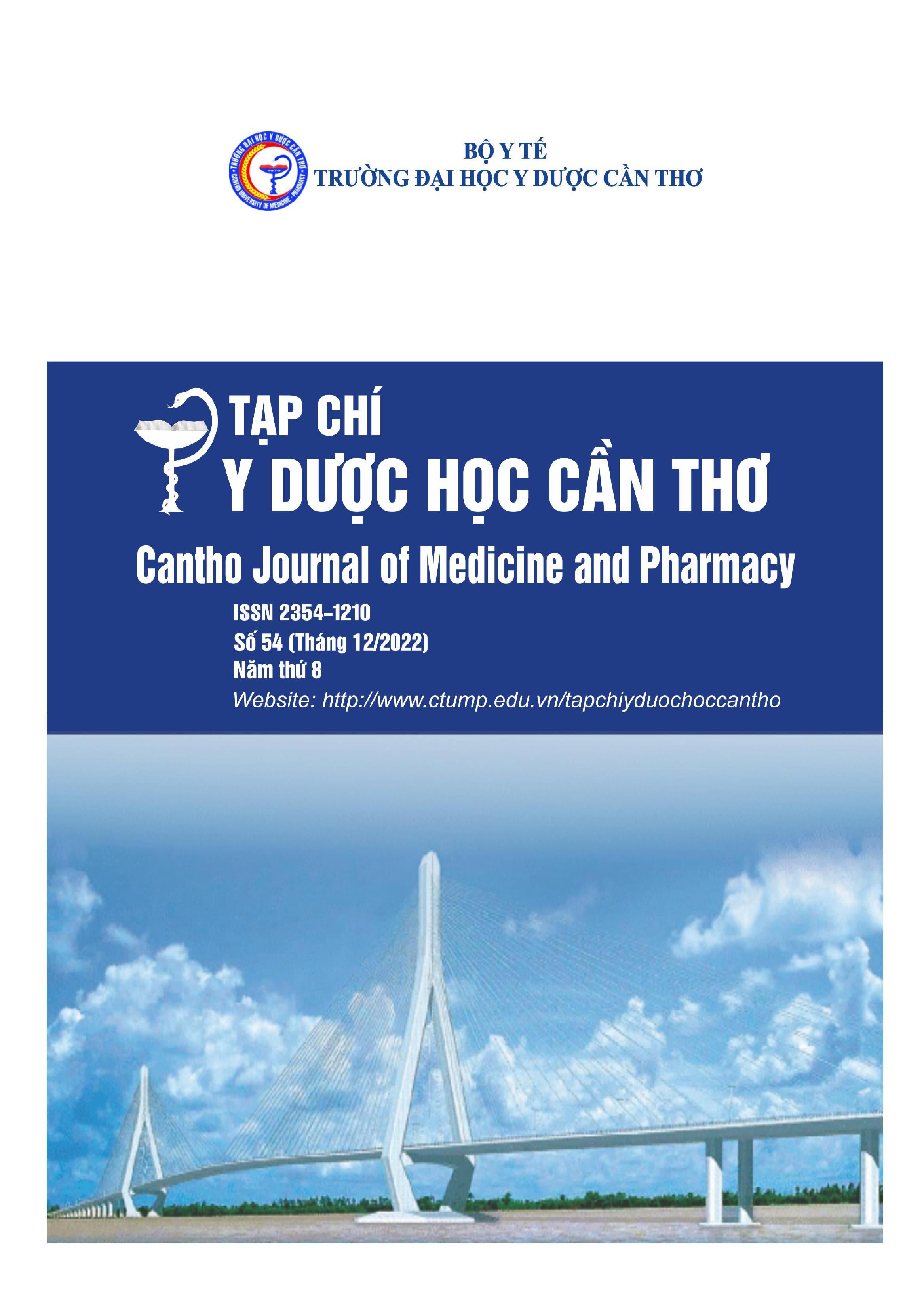ASSESSING THE USING RESULTS OF MEDICATIONS TO TREAT HIGH BLOOD PRESSURE IN PREGNANT WOMEN WITH PRE- ECLAMPSIA AND ECLAMPSIA AT CAN THO GYNECOLOGY AND OBSTETRICS HOSPITAL IN 2021-2022
Main Article Content
Abstract
Background: Hypertension is a common medical condition in pregnant women, and is one of three important causes of maternal mortality worldwide. Objectives: 1. To determine the characteristics of using drugs to treat high blood pressure in pregnant women with pre-eclampsia and eclampsia; 2. To evaluate the results of hypertension treatment in pregnant women with preeclampsia and eclampsia. Materials and methods: A cross-sectional study was conducted on 399 pregnant women with pre-eclampsia and eclampsia at Can Tho Gynecology and Obstetrics Hospital from March 2021 to May 2022. Data was analyzed by SPSS 20.0 software. Results: The drug used in the treatment of hypertension in pregnant women was Methyldopa, Nifedipine, Nicardipine, and Furosemide accounting for 96.7%, 78.7%, 33.1%, and 16.0% respectively. The rate of successful use of antihypertensive drugs in pregnant women with preeclampsia and eclampsia was 94.5%. Conclusion: The use of prescription or combination of drugs Methyldopa, Nifedipine, Nicardipine, and Furosemide is effective in lowering blood pressure in pregnant women with pre-eclampsia and eclampsia.
Article Details
Keywords
Drugs to treat hypertension, pre-eclampsia, eclampsia
References
2. Bệnh Viện Từ Dũ (2019), “Tăng huyết áp thai kỳ”, Phác đồ điều trị Sản Phụ khoa Bệnh viện Từ Dũ, tr. 89-103.
3. Ngô Thị Kim Huê (2016), “Hiệu quả của Nicardipine truyền tĩnh mạch diều trị hạ áp trong tiền sản giật nặng tại khoa Sản bệnh, Bệnh viện Đa khoa Kiên Giang”, Tạp chí nghiên cứu y học, rập 20 (21), tr. 304-309
4. Hoàng Kim Huyền (2007), “Sử dụng thuốc chống tăng huyết áp trong điều trị tiền sản giật, sản giật tại bệnh viện Phụ sản Trung Ương”, Tạp chí nghiên cứu kỹ thuật, sô 374, tr. 9-12
5. Phạm Văn Nhỏ, Lê Minh Dũng, Võ Minh Tuấn (2021), “Đặc điểm tăng huyết áp thai kỳ và mối liên quan đến kết cục thai kỳ của bà mẹ người dân tộc Khmer tỉnh Trà Vinh”, Tạp chí Y học Việt Nam, số 2, tr. 89-93.
6. Phạm Văn Tự, Nguyễn Quốc Tuấn, Phùng Thị Lý (2021), “Đặc điểm lâm sàng, cận lâm sàng và kết quả thai kỳ ở thai phụ tiền sản giật – sản giật tại Bệnh viện đa khoa Hà Đông”, Tạp chí Phụ sản, số 1, 2021, tr. 30-37.
7. Lê Thị Ngọc Xuyên (2021), Nghiên cứu kết quả dự đoán, chẩn đoán tiền sản giật ở thai phụ có nguy cơ tiền sản giật tại Bệnh viện Phụ sản thành phố Cần Thơ”, Luận văn bác sỹ nội trú chuyên ngành sản phụ khoa, trường Đại học Y dược Cần Thơ
8. Thomas Easterling (2019), “Oral antihypertensive regimens (nifedipine retard, labetalol, and methyldopa) for management of severe hypertension in pregnancy: an open-label, randomised controlled trial”, Randomized Controlled Trial, Lancet, 2019 Sep 21;394(10203):1011-1021.
9. Manisha Kumar, Usha Gupta, Jayashree Bhattachaijee, Ritu Singh, Shalini Singh (2016),
“Early prediction of hypertension during pregnancy in a low-resource setting”, International Journal of Gynecology and Obstetrics, pp. 159-164.
10. Kannan Sridharan, Sequeira RP (2018), “Drugs for treating severe hypertension in pregnancy: a network meta-analysis and trial sequential analysis of randomized clinical trials”, Br J Clin Pharmacol. 2018;84:1906-1916.
11. Mary Catherine Tolcher (2020), “Intravenous labetalol versus oral nifedipine for acute hypertension in pregnancy: effects on cerebral perfusion pressure”, American Journal of Obstetrics and Gynecology, Vol 20.


